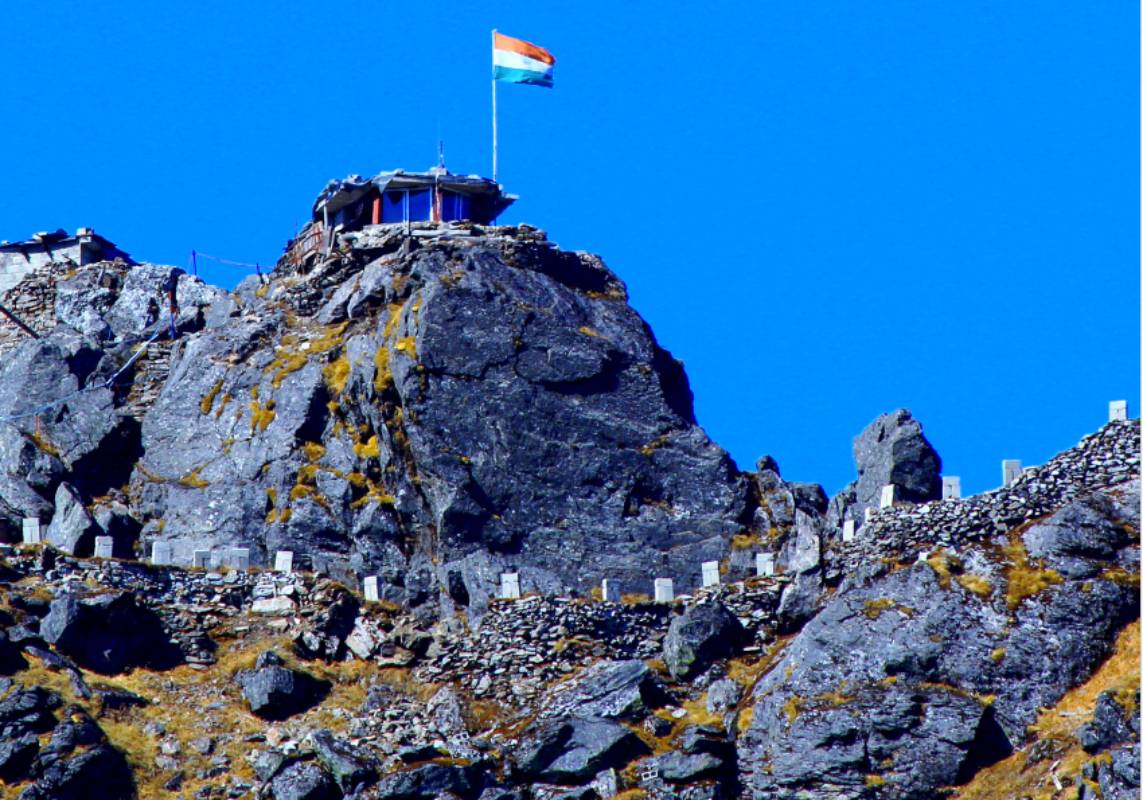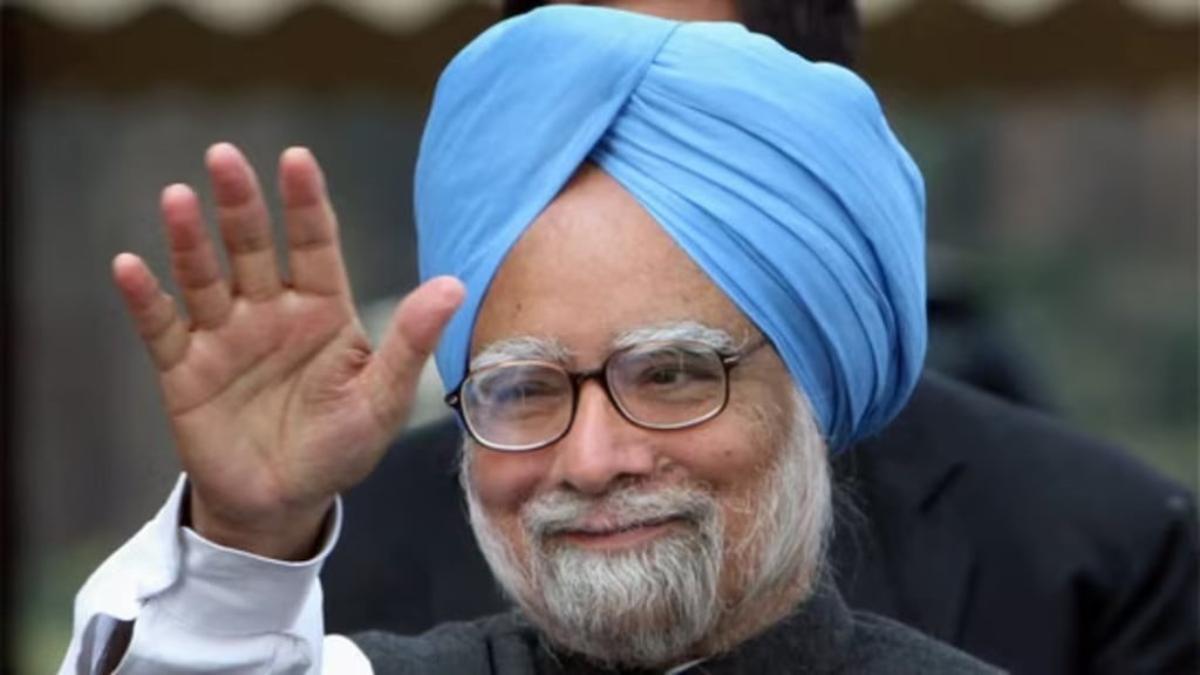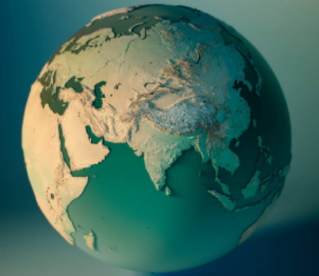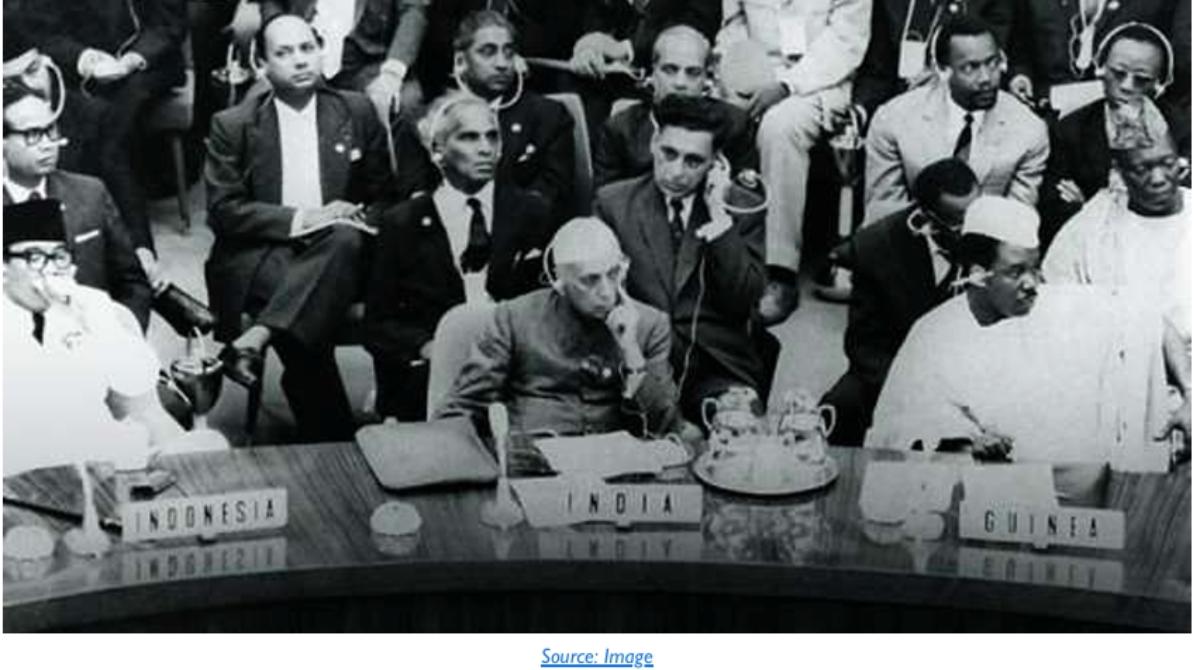Centrality of Power
The theory is rather simple: colonial wars created borders, postcolonial nations scramble over them. In South Asia these so-called borders routinely complicate regional security. Between India and China the bones of contention are the disputed boundaries in the Ladakh region and the McMahon Line (1914) in Arunachal Pradesh that separates it from Tibet. Between Afghanistan and Pakistan it is the Durand Line (1893/1901), which is arguably a crisis in the waiting. One need not search for morality in those imperial exercises for all that mattered to the British was their strategic interest. Power, as understood in international politics, constituted the warp and woof of the system those days, as they are even now.
The on-going border conflict between India and China will be put to rest someday depending upon who bargains for what based upon their intrinsic power. Although the definition of power has undergone changes over the years the bottom line is still the respective military strengths. The other backup variables are: economic base, societal cohesion, structure of the national ambition as buttressed by ground preparations, etc. India does not stand measurably vis-à-vis China on any of these counts. One fundamental advantage for India, however, is its democracy provided it is duly put to use.
Current Border Blues
An uncanny peace now prevails on the India’s China border. The Indian government first assured the nation that no Indian territory had been lost to China. Later, on 15 September 2020, through its Defence Minister Rajnath Singh, it categorically informed the Lok Sabha that China had over the years either occupied, or illegally claimed, approximately 133,180 sq. km. of India’s land, including Aksai Chin, portions of Pakistan Occupied Kashmir (POK), and vast stretches of Arunachal Pradesh. The statement inter alia said: ‘[T]he situation this year is very different both in terms of scale of troops involved and the number of friction points, we do remain committed to the peaceful resolution of the current situation. At the same time, the House can be assured that we remain prepared to deal with any contingencies (emphasis added).’ Notably, there was no reference to the recent territorial advances made by the Chinese.
What meanings can be adduced from the statement? Here are some probable explanations. One, India is preparing for an all-out war with China to regain its recently lost territories, and more importantly, its bruised prestige in the world, more particularly in the region. The Delhi-based Outlook magazine (21 September 2020) even carried a cover story with the title: Is war inevitable? It might have excited India’s self-styled nationalists, but given the power differential between the two nations, such a scenario is very risky to visualize. Prime Minister Narendra Modi has avoided all kinds of jingoism. He even steered clear of mentioning China by name. The war is, therefore, unlikely, though India’s message is clear: this far and no farther.
Two, the statement is meant to play to the gallery. Anyone who has studied Prime Minster Narendra Modi’s blitzkrieg style diplomacy1 should know that it is heavily oriented towards bolstering his domestic support base. It started from day one in 2014. In his inaugural ceremony he invited all the eight SAARC heads so as mark a new beginning for the organization. But today SAARC is in tatters. Later, his meetings with NRIs in developed countries were primarily meant to communicate with their families and friends back home in India. At present, Prime Minster Modi is the uncrowned king of India. All that his supporters want to hear from him is that everything is okay on the India-China front and when the crunch comes he would adequately teach China a lesson.
Three, more than India, it serves China’s interests. Diplomatic and military parleys with the Chinese to diffuse the situation and reclaim more than a thousand square kilometers of lost Indian land have been going on for several weeks now. But one has not come across any Chinese commitment to restore the status quo ante. Neither the joint statement nor the two separate statements released after the meeting of 10 September 2020 between S. Jaishankar and Wang Yi, the foreign ministers of the two counties, mentioned anything to that effect.
In a web-based colloquium organized by the National Committee on U.S.-China Relations held on 9 October 2020 under the title: ‘Tensions in the Himalayas’, the Chinese participant, Professor Shen Dingli, categorically underlined the disputed nature of the India-China border and suggested that the best way to prevent the situation from further deterioration was to declare a ‘demilitarized zone’ and wait optimistically for a better situation to emerge sometime in the future, which could be years away. His proposed solution was to first define a reasonable area of dispute, then to turn the area into a temporary area of peace as per the Line of Actual Control (LAC) ideally defined by both countries. This would be a temporary solution thereby turning the area of dispute into an area of stability, disengagement, and demilitarization. This way, China and India would learn to respect each other and find a more long-term solution.2 Shen indeed was not speaking on behalf of the Chinese government but Chinese academics know their government’s mind better than their Indian counterparts.
Fourth, and most importantly, now that the much-hyped bonhomie between India and China has soured, what should India’s larger policy vis-à-vis China be. It has two major aspects: one, how to match China economically which determines the intrinsic strength of a nation, and two, how to create a world opinion against China as an expansionist power. The latter may not make China return the territory it has already grabbed but it can at least prevent it from any such filching in the future.
India-China Asymmetry
In spite of all the tall talk about India emerging as the vishwaguru (wisdom giver of the world) and that the shining global profile of India is making the country one of the top seeds in the international race for supremacy, the reality is quite different. From my personal experiences in Europe and America after this vishwaguru business became quite popular in India I can say with a sense of responsibility that this claim is grossly misplaced, primarily created in India by its own electronic media with hardly any taker abroad barring a section of the NRIs. There was a time in the 1990s and early 2000s when India studies were becoming popular in many of these countries but by the end of the first decade of this century India studies started getting replaced by China studies. It was not for any love for China but simply because the latter mattered more to them in economic and strategic terms. If ‘know your enemy’ is the gospel of all Area Studies programmes it meant simply that. In contrast India lost its glamour, was increasingly seen as a poor nation seething with all kinds of social tensions.
This author was startled to see how his lecture on ‘India in South Asia’ at the University of Ljubljana (Slovenia) in March 2015, by when BJP was well entrenched in power with its election manifesto having proudly proclaimed the country as vishwaguru, was completely hijacked by a volley of questions on gang rapes in India. Although the Nirbhaya gang-rape tragedy was almost three years old by then, it continued to catch the imagination of the students. These are hard realities Indians trumpeting about Indian glory sitting in India’s middle class drawing rooms must realize. Almost during the same time it became a big news in India how the German Chancellor, Angela Merkel, had inaugurated the Indian Pavilion at the Hanover international trade fair in the presence of Prime Minster Narendra Modi. But in the German media the event hardly figured as an important news.
In contrast, Deng Xiaoping, the builder of modern China, is famously associated with the statement, ‘hide your capacities and bide your time’. One is not sure whether he really said so, or in what context, but the slogan has certainly been translated into reality. An India-China comparison done about a decade ago underlined the gap between the two nations. For example, China’s GDP in PPP terms was 9.87 trillion dollars vis-à-vis India’s 3.91 trillion; annual per capita GDP in PPP terms was 7,599 dollars versus 3,425; and the defence budget stood at 106.4 billion dollars to 40.5 billion dollars. China’s annual steel production of 683.3 million tons dwarfed India’s figure of 72.2; in cement production, the ratio was 1800 million tons to 220 million tons.3
In terms of welfare, 29.8% of the population survived on less than $2 a day in China, the corresponding share for India was 54%. Adult literacy in China stood at 96%, in India at 76%; and the Human Development Index (HDI) ranked China at 101 while India at 134. China produced 16,200 doctorates in science and engineering every year, India barely 7,300; China had 520,000 vocational and training institutes, India just 12,260. China’s child mortality rate (under 5 years per 1000) in 2010 was 18 compared to India’s 63. China’s per capita electricity consumption was 2631 kWh, while India’s was 597 kWh.4
The gap has persisted. In defence while the per capita spending in China is $182 it is less than a third of that in India. In 2019 India spent about $71 billion on defence while China as much as $261 billion. During the last ten years Chinese defence spending has more than doubled while that of India only by half. It may be argued that the Indian armed forces are more battle-hardened than the PLA but on balance the advantage is clearly with the Chinese.5
Chinese venture capital is well entrenched in India with more than $8 billion invested in most successful Indian startups. China supplies many goods and services that India needs.6 Just to take a recent COVID-related example, sometime early this year it was thought that one of the possible drugs for the pandemic was hydroxychloroquine (HCQ) of which India was the biggest producer accounting for almost 70 per cent of the global supply. But one of the essential ingredients of the medicine came from China. It is possible that this dependence may gradually decline but it will not happen overnight.
India is looking for a larger economic and strategic role in the Indo-Pacific region. But there also it would require fine tuning keeping in mind, on the one hand, India’s strategic participation in the Quad (America-Australia-India-Japan), and then on the other, its exit from the RCEP (Regional Comprehensive Economic Partnership). One must remember that China is aggressively pursuing its economic interest in the region, leave alone strategic. In recent years ASEAN has overtaken the United States and soon it may even overtake the European Union as well as China’s largest trading partner.7 How to adjust India’s Act East Policy with this frame is a huge challenge.
Playing Ball with America
Ever since President Donald Trump’s rise to power, Prime Minster Modi has wholeheartedly stood by him considering the fact that not only the Indian-Americans matter in American politics but also because they constitute a huge source of support for BJP. As the COVID-19 pandemic has devastated the Trump presidency which may lead to his defeat in the forthcoming presidential election it is in India’s larger interest to watch out its steps before treading into the over-hyped anti- China net spread by the Trump administration. The ultra-right pro-Trump think tank, Committee on the Present Danger: China (CPDC), which is massively manned by former military and intelligence officers, is on an overdrive to declare China as enemy numero uno.8
The U.S. idea is to create a conducive climate for an impending Cold War 2.0. But India must respond carefully. One may recall that from the end of the Cold War until 9/11 when Islamic terror became the focal point of U.S. global strategy, it was Japan that occupied the image of America’s prime adversary. Debates in American academia centered on the impending economic wrangle between America, Japan and Western Europe, most significantly Japan.9 China was nowhere in the picture. Like the U.S-Japan rivalry then, what we see today is an impending technology war between America and China. Who will beat whom in the realm of Artificial Intelligence (AI) is the question?
In this twenty-first century ‘great game’ India is unlikely to matter. In the India-China context some may hope that when the chips will be down for India the U.S. will come to India’s rescue. But that is not how superpowers work. They take care of their interests first. One may have noted that on several occasions President Trump tended to offer mediation between India and Pakistan, or between India and China, but rarely did he take any pro-India position. At best he was diplomatically nuanced.
Conclusion
In the ultimate analysis, a nation will have to fend for itself. Foreign tie-ups do help but only to a limited extent. What matters most is the national strength structured on security preparations, internal stability, and economic strength. Lately, India has been suffering from many fault lines. Barring the Partition days, Indian society has never been as polarized as it is now. The Indian economy has
never been worse off than what it is in now which the COVID-19 pandemic has further battered. Indians have never been as poorly informed by the state as they are now. Even such a major event like the unlawful Chinese occupation of our territory was obfuscated for months by inconsistent official statements.
Let me end this essay with a self-effacing perspective. Sometime in 1985 the London University historian Kirti Narayan Chaudhuri speaking at the Heidelberg University made a point which may be recalled here. He said that history had its course, its own philosophy, not necessarily fathomed by the decision makers of the day. By early twentieth century many thinking Brits had apprehended that the end of their Empire was in the making but they could not arrest the process. In his memoirs Present at the Creation (1969) the U.S. Secretary of State, Dean Acheson, confessed that everything within America’s power was done to prevent the ‘fall’ of China to the Communists in 1949, but America could not succeed.
How, therefore, will the India-China conflict finally end no one knows. In keeping with our academic reticence we can simply pray that these two Asian giants would not decide to fight to the finish the inevitable consequence of which is mutual destruction. To avoid that disaster let India bide its time and start preparing forthwith to avoid a repeat situation. Timely retreat is an essential element of war strategy.
Footnotes:
1 Partha S. Ghosh, BJP and the Evolution of Hindu Nationalism: Savarkar to Vajpayee to Modi (New Delhi: Manohar, 2017), pp. 437-46.
2 https://www.ncuscr.org/events/himalayas-tension
3 For the complete table, see Partha S. Ghosh, ‘An Enigma that is South Asia: India versus the Region,’ Asia-Pacific Review (Tokyo), 20 (1), May 2013, pp. 100-120
4 Ibid.
5 Nalin Mehta, ‘To take on Chinese “wolf warriors”, India must fix military asymmetry,’ Sunday Times of India (New Delhi), 28 June 2020.
6 Uday Balakrishman, ‘A strategic dealing with China,’ The Hindu (New Delhi), 2 October 2020.
7 Zorawar Daulet Singh, ‘On the economy, don’t disengage with China,’ Hindustan Times, 28 July 2020.
8 Atul Bhardwaj and Inderjeet Parmar, ‘Trump’s Desperation and the Manufactured China Threat,’ Economic and Political Weekly (Mumbai), 55(31), 1 August 2020, pp. 10-12.
9 See, Lester Thurow, Head to Head: The Coming Economic Battle among Japan, Europe and America (New York: William Morrow and Company, Inc., 1992).








